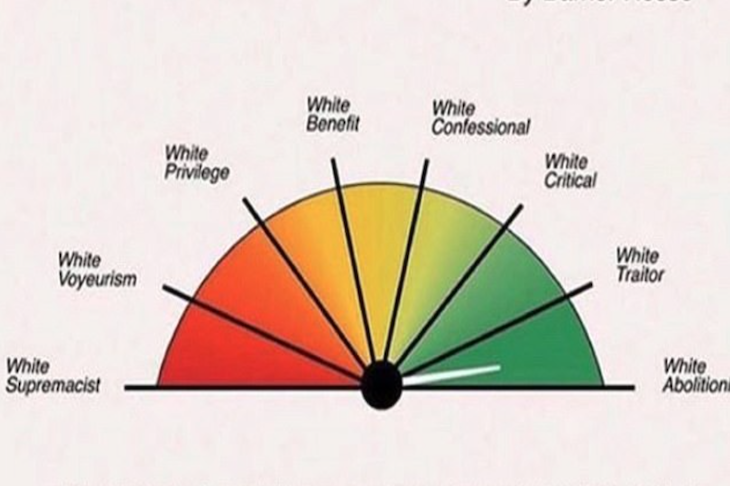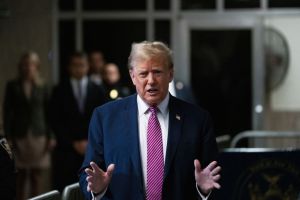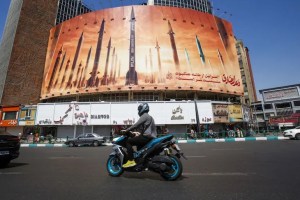Are you white? If so, how white are you? Or to put it another way, where would you place your ‘whiteness’ on a scale of one to eight? This might seem like an odd question for those who still see whiteness as mere skin pigmentation. For many progressives however the term has come to mean a form of bigotry inherent in, but not exclusive to, white people. In other words, you don’t have to be white to suffer from the affliction of ‘whiteness’ but it certainly helps.
To clear up any confusion, Mark Federman, principal at the East Side Community High School in Manhattan’s Lower East Side has sent parents a handy pamphlet. It ranks, in graphic form, eight color-coded ‘white identities’ with ‘white supremacist’ at one end and ‘white abolitionist’ at the other. In between these two extremes are categories such as ‘White Voyeurism’, ‘White Confessional’ and our old friend ‘White Privilege’, described as ‘sympathetic to a set of issues but only privately; won’t speak/act in solidarity publicly because benefitting through whiteness in public (some People or Color are in this category as well)’.
Writing about his eight-point ‘ethnography of whiteness’, Barnor Hesse, an associate professor of African American studies at Northwestern University in Illinois, claims ‘there is a regime of whiteness, and there are action-oriented white identities. People who identify with whiteness are one of these.’
For those who prefer to judge individuals based on the content of their character, Hesse’s pamphlet may seem a little tribal in tone but it comes at a time when many within the education system are attempting to eliminate what Hesse describes as ‘white-supremacy culture’. But herein lies a problem; even those who vow to dismantle such a culture struggle to define what it actually is. For example, in their ‘Characteristics of White Supremacy Culture’ thesis from way back in 2001, Kenneth Jones and Tema Okun assert that ‘culture is powerful precisely because it is so present and at the same time so very difficult to name or identify.’ Unlike statues of course, which are much easier to identify and thus tear down.
Jones and Okun go on to list the various characteristics described as ‘damaging because they are used as norms and standards without being pro-actively named or chosen by the group.’ In essence their advice boils down to treating PoC with respect; hardly the stuff of revolutionaries hell-bent on bringing down structures of power. The list does suggest however that common decency isn’t something that comes naturally to those of us with pale complexions.
Categorizing skin color, not as a quirk of nature but as part of a system of oppressive power, fits neatly into the anti-bias training schemes currently being rolled out across so many western educational establishments. In the specific case of East Side Community High, one has to wonder how such a depressingly reductive way of seeing human nature will play out in a school where only 18 percent of pupils identify as white. If anything, those nasty white supremacists, described in Hesse’s chart as a ‘clearly marked white society that preserves, names, and values white superiority’ have failed in their dastardly plan. Or perhaps not — remember white privilege isn’t an exclusively white advantage, nor it seems is ‘white benefit’, a category described by Hesse as ‘sympathetic to a set of issues but only privately: won’t speak/act in solidarity publicly because benefitting through whiteness in public (some PoC are in this category as well).’ Could it be then that some of the majority Latino pupils at East Side harbor evil white supremacist thoughts?
But hang on, if PoC can buy into the sin of ‘whiteness’, surely white people can, by the same token, buy out of it? Well not really, because apparently biases fester in our unconscious mind no matter how resistant the conscious mind is to bigotry. Then again, unlike many within the anti-racist lobby — hello Robin DiAngelo — Hesse’s graph seems to imply that white people can indeed break free from the chains of their own dysfunction so long as they identify as ‘White Abolitionists’, which involves ‘changing institutions, dismantling whiteness and not allowing whiteness to reassert itself’. That’s quite an ask.
Becoming an ally then takes more than just a passive acceptance that we are all equal in the sight of God. True ‘allyship’ according to award-winning Global Diversity, Equity & Inclusion Leader Sheree Atcheson, is a ‘lifelong process of building relationships based on trust, consistency and accountability with marginalized individuals and/or groups of people’. Great but when do we get to tear down those evil structures? Well, anti-white supremacy advocates aren’t exactly clear about how or when they intend to enact the revolution other than by ineffectual posturings such as decolonizing curricula, cancelling ‘problematic’ Disney cartoons and pulling down statues of dead white men.
Black Lives Matter has at least set out its stall by promising to end capitalism, defund the police and delegitimize the nuclear family although how they hope to achieve such a utopian fantasy without extensive bloodshed remains unclear.
The powerful diversity and inclusion lobby have come to see diversity as a way of playing one race off against another but by racializing so much of the public realm they have set in motion a zero-sum war with no achievable endpoint. Meanwhile, out here in the real world where few things are black and white we continue to muddle along, trying our best to be nice to each other. Demonizing ‘whiteness’ in the name of inclusivity won’t help us achieve anything.


















